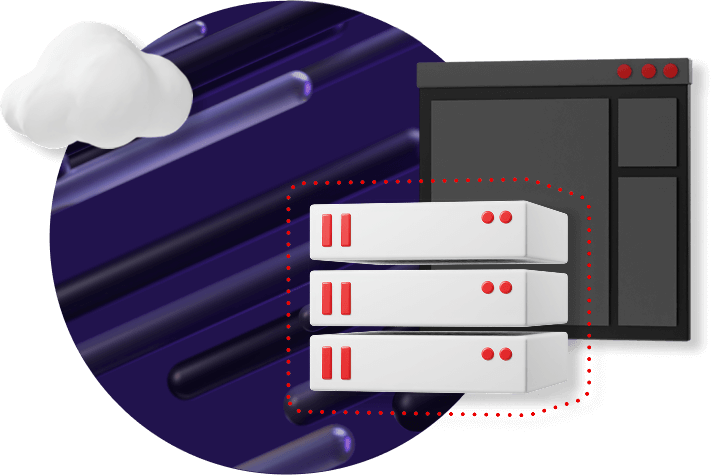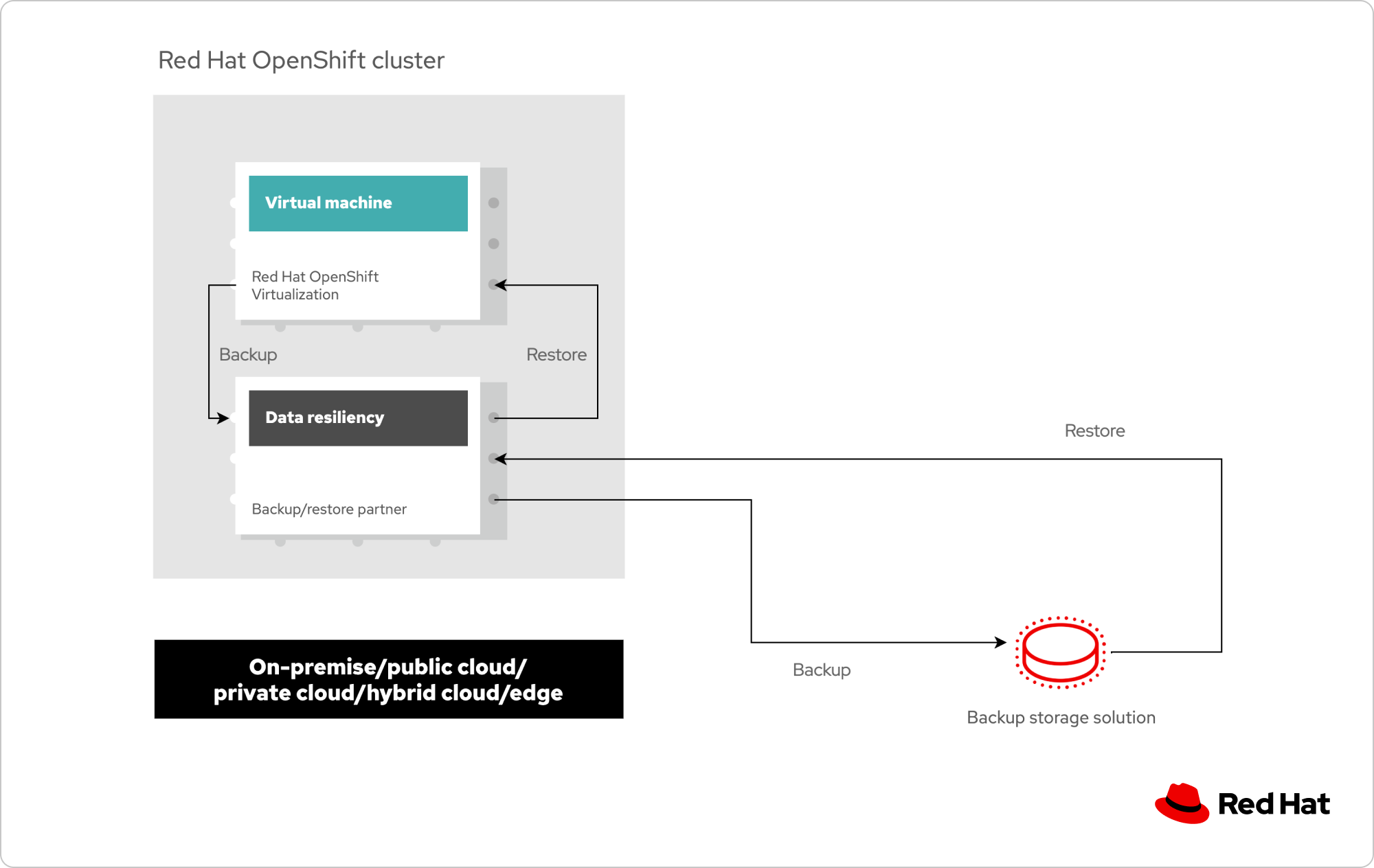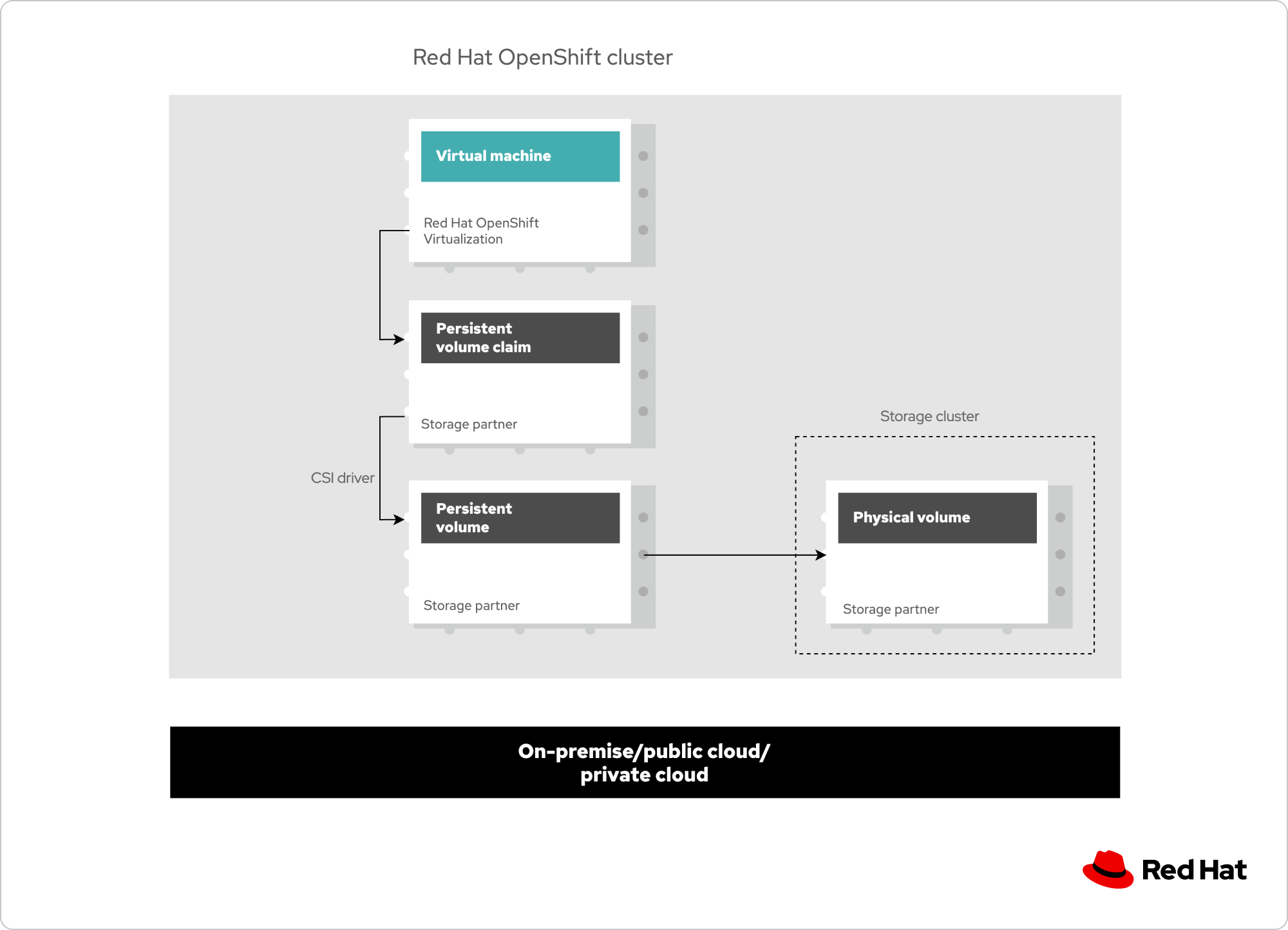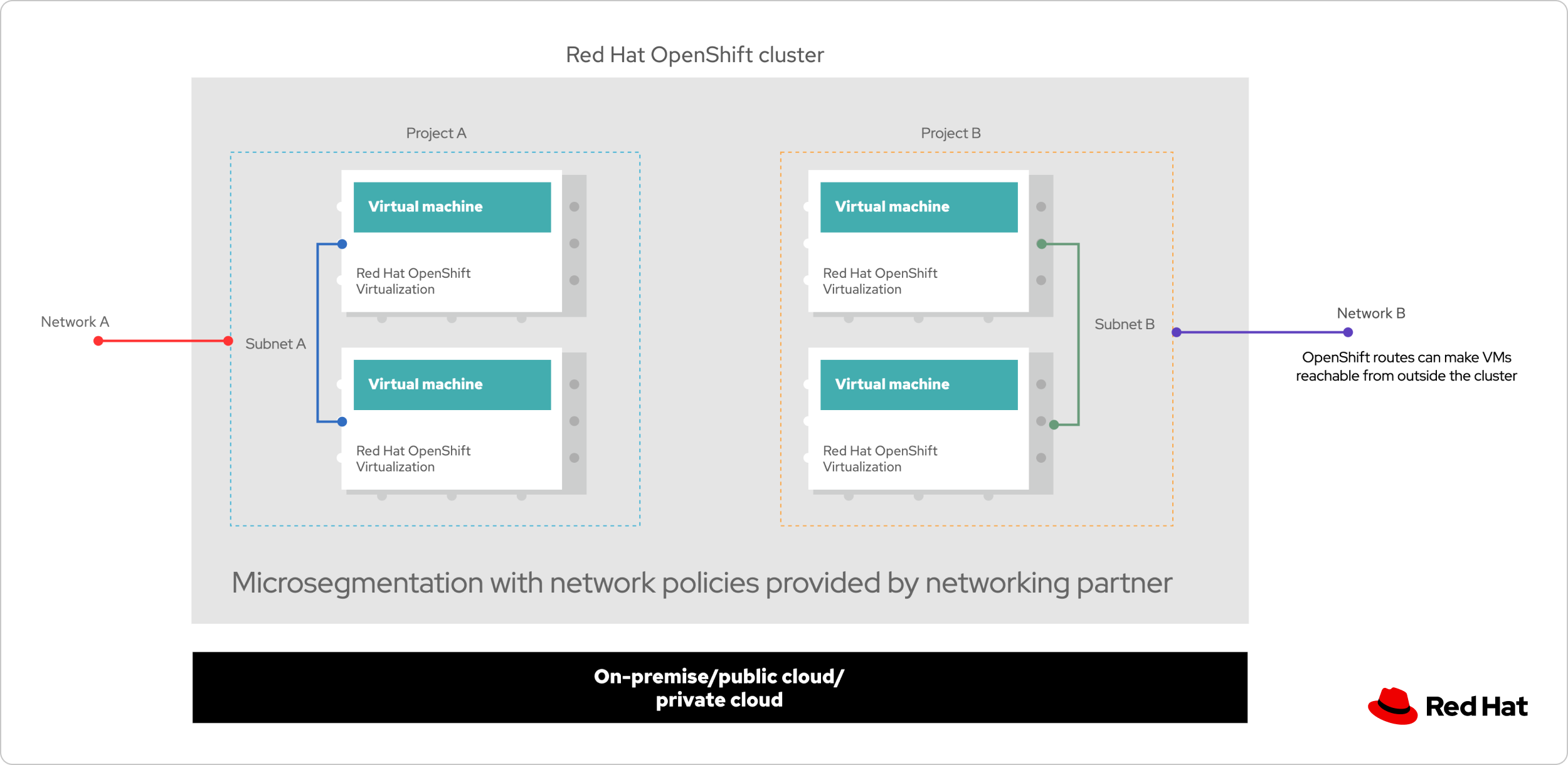-
Product editions -
Cloud services editions
Fully managed in the public cloud of your choice
-
Red Hat OpenShift Service on AWS
Jointly managed and supported by Red Hat and AWS
-
Microsoft Azure Red Hat OpenShift
Jointly managed and supported by Red Hat and Microsoft
-
Red Hat OpenShift Dedicated
Managed offering available on AWS or Google Cloud
-
Red Hat OpenShift on IBM Cloud
Jointly supported by Red Hat and IBM; managed by IBM
-
Self-managed editions
Granular control on your own infrastructure
-
Red Hat OpenShift Platform Plus
A complete platform for accelerating application development and application modernizations
-
Red Hat OpenShift Container Platform
A full set of operations and developer services and tools
-
Red Hat OpenShift Kubernetes Engine
Basic functionality of enterprise Kubernetes
-
Red Hat OpenShift Virtualization Engine
A streamlined solution focused exclusively on virtual machine workloads
-
Services & add-ons
A portfolio of managed cloud services and tools for Red Hat OpenShift
- Red Hat OpenShift AI
- Red Hat OpenShift Lightspeed
- Red Hat OpenShift Virtualization
- Red Hat Quay
- Red Hat Advanced Cluster Management for Kubernetes
- Red Hat Advanced Cluster Security for Kubernetes
- Red Hat Advanced Developer Suite
- Red Hat OpenShift Consulting
-
-
Documentation Cloud services editions
-
Explore Why Red Hat OpenShift?
-
Learn Guided offerings
Hands-on training and experiences to develop knowledge and skills for using OpenShift
- Red Hat OpenShift Virtualization training and certification
- Containers, Kubernetes and Red Hat OpenShift Technical Overview
- Red Hat OpenShift Administration I: Operating a Production Cluster
- Red Hat OpenShift Administration II: Operating a Production Kubernetes Cluster with exam
- Developing Applications with Red Hat OpenShift Serverless and Knative
- Modern Application Development Roadshow
Learning hubs
Learning materials and tools organized by top tasks for key OpenShift services
On-demand
-
Interactive labs
Scenario-based, preconfigured OpenShift environments in your web browser
-
OpenShift learning paths
Resources for beginners or experts, dev or ops
-
Red Hat OpenShift Library
Materials divided into chapters for self-managed and managed OpenShift customers
-
Ask an OpenShift Admin
Livestream episodes on OpenShift topics and cloud-native tooling
-
Get started Try Red Hat OpenShift
-
Red Hat OpenShift Service on AWS hands-on experience
Get access to a free 8 hour hands-on experience of ROSA in a Red Hat owned demo environment
-
Red Hat OpenShift Container Platform
Self-managed on OpenShift Container Platform, in the cloud, on your computer, or in your datacenter
-
Red Hat OpenShift Dedicated
Fully managed OpenShift Dedicated trial cluster with self-service sign-up and cluster provisioning in your Google Cloud account
-
Developer sandbox
Instant access to your own minimal, preconfigured environment for development and testing
Buy Red Hat OpenShift
-
Red Hat OpenShift Service on AWS
A pay-as-you-go, fully managed turnkey application platform which allows organizations to quickly build, deploy, and scale applications in a native AWS environment
-
Azure Red Hat OpenShift
A pay-as-you-go, turnkey application platform that provides highly available, fully managed OpenShift clusters on demand
-
Red Hat OpenShift Service on AWS hands-on experience
Red Hat OpenShift Virtualization partners
Red Hat’s robust partner ecosystem adds powerful capabilities and support to Red Hat® OpenShift® Virtualization, bridging skill gaps and offering you freedom to choose tools and partners without vendor lock-in.
A unified platform
Red Hat OpenShift Virtualization and our robust partner ecosystem come together as one complete solution for virtualization migration, management, and modernization.
Red Hat OpenShift Virtualization offers a single platform for containerized applications and applications running in virtual machines (VMs)—deployed on-premise, in public or private clouds, or in hybrid environments. Our partners provide the knowledge and tools to help you migrate VMs, accelerate implementation, and reduce risk in achieving your ideal virtualization end state—without vendor lock-in.
Complete your solution
Red Hat’s partner ecosystem helps you complete your virtualization solution with integrated services and products in key areas. You can continue working with the tools and features you know—while protecting the Red Hat OpenShift investments you’ve already made.
Partner solution examples
For a more technical view of what implementation could look like in your environment, check out these diagrams for conceptual examples. The Red Hat ecosystem provides flexibility to tailor a virtualization solution to meet your needs and support your plans for the future.
Backup & recovery partners
Storage partners
Networking partners
Partner solutions deliver success for customers
MultiChoice modernized with Red Hat
Find out how MultiChoice worked with services partner LSD Open to create a future-ready platform to deploy faster and build more cloud-native apps, minimizing hands-on management.
If we wanted to become more efficient and cloud-native in the future, we needed to replace manual processes with automation, adopt microservices, and introduce a container orchestration platform.
Resources
E-book
The value of Red Hat OpenShift Virtualization partner ecosystem
Datasheet
Migrate and manage VMs with Red Hat OpenShift Virtualization Engine
Datasheet
Plan a strategic path forward for VM migrations
Overview
Deploy, migrate, and protect VMs with a partner solution
Backup and disaster recovery partners
Backup and disaster recovery workflow. The text below provides a detailed explanation of the process.
Comprehensive VM and application protection
Backup and restore partners provide backup and recovery capabilities at multiple levels, including the full VM, application, and at the file-level.
Flexible backup and recovery destinations
Data can be backed up and restored to original or alternate clusters, namespaces, or cloud environments (using any kind of S3 or blob storage), supporting disaster recovery and migration scenarios.
Enhanced data security
Partner solutions often include encryption, access controls, and compliance features to help protect sensitive data against ransomware and other threats and to meet regulatory requirements.
Centralized management and automation
Many partner solutions offer intuitive, centralized dashboards for managing backup policies, scheduling automated backups, and monitoring data protection status.
Storage partners
Storage and data persistence workflow. The text below provides detailed explanations for how data and storage resources are presented, provisioned, and persisted.
Data storage
Red Hat OpenShift allows underlying storage (physical volumes) to be presented to VMs as Kubernetes persistent volumes, which are provisioned storage resources in the cluster. The container storage interface (CSI) provides the API to configure and manage these physical volumes, and the storage partners deliver their drivers. Data can be mutually stored on the storage cluster—running a partner storage solution—and in the Red Hat OpenShift cluster.
Data persistence
Storage partners provide solutions to persist data in VMs. Because the VMs are just another Red Hat OpenShift resource in Red Hat OpenShift Virtualization, they will need to access storage as Red Hat OpenShift resources, provisioned as persistent volumes.
Networking partners
Networking workflow. The text below provides detailed explanations of the solutions networking partners provide.
Network segmentation
Networking partners enhance Red Hat OpenShift Virtualization capabilities to create isolated network segments, supporting multitenancy (Project A and Project B) and compliance requirements. Subnet A and B are networks inside each tenant that connect the VMs.
Centralized control
Partners provide robust network management tools, enabling centralized configuration and monitoring of network policies and segmentation across VMs and containers.
Scalable networking
Networking partners offer high-performance solutions that scale as the Red Hat OpenShift environment grows, ensuring consistent throughput and low latency for critical workloads.
Enhanced security
Partners offer advanced security features, including network policy enforcement, intrusion detection, and compliance monitoring, to protect both VMs and container workloads.











